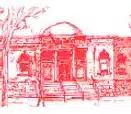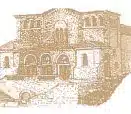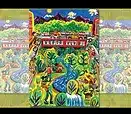Historic Walking Tour
In this guide, the "Adventurer" will find architectural descriptions, connections to colorful people, symbols for locations where Las Vegas was used as a film set (see the companion Walking Tour Film Guide) and symbols where apparitions have appeared. This guide to the Historic Home Trail is laid out according to the time periods in which each section of the City was built.It is intended to give you a taste of Las Vegas; history through some of your treasured places. Alternately, you can walk from the Visitor Center to the Historic Plaza and Bridge Street and beyond through historic districts. Limited space prevents the inclusion of all the 900 structures in and around Las Vegas that are listed on the National Register of Historic Places. We leave it to you to discover the remaining gems as you leisurely stroll through the streets of our city, talk to friendly people, enjoy our famed red and green chile, and listen to live local music. We invite you to venture into another place and time through the many places that tell well over 900 stories.
WELCOME to Las Vegas, New Mexico, at one time the largest city on the Santa Fe Trail and the first major stop on the journey to the Wild West. Here, where the mountains meet the plains a confluence of cultures, ethnicity and traditions emerged; and a mosaic of colorful people made their mark resulting in stories that stir the imagination.
Today, in this still unvarnished land of legend and lore, visitor forge new adventure down these old trails, and create legends of their own on the very ground where the West began and history was made.
Because Las Vegas and the surrounding landscape have preserved so much of its original authenticity, it doesn't take much for modern visitors to let their imagination wander back more than 100 years: To weary travelers on the rutted trail taking refuge in this wild trading post. To the Comanche, Apache and Pueblo Indians hunting in the tall grasses and living a tentative, uneasy truce with the pioneer traders and settlers.
The archaeological record shows the fertile valley of Nuestra Senora de los Dolores de Las Vegas Grandes (Las Vegas) -- was occupied as early as 8,000 B.C. by Paleo-Indians. Pueblo Indians were present in the area during the 1100s and 1200s until forced out by drought or aggressors. In subsequent years nomadic Native Americans, including Comanche Indians, camped in the Las Vegas area. A succession of Spanish explorers, beginning with Coronado in 1541, passed through going east in search of the fabled Cities of Gold. By the 1790s an increase of population in the Rio Grande valley caused Spanish settlements to expand from there to the eastern face of the Sangre de Cristo Mountains.
In 1835, twenty-nine individuals received the Las Vegas Land Grant from the Mexican government. The Alcalde (administrative justice) of nearby San Miguel del Vado accompanied the settlers to Las Vegas ("the Meadows") and in Spanish manner, according to the Laws of the Indies, they laid out a large plaza and surrounding community. Las Vegas will delight and immerse you in a historical and architectural experience unparalleled in the great American Southwest. From the indigenous adobe architectural of New Mexico to the glamorous, machine-age International style, Las Vegas showcases nearly every important architectural residential style built in the United States between 1840 and 1960. You'll enjoy a unique city planning.
The historic Old Town Plaza district was established o high ground above the Gallinas River for irrigation purposes; the area that is now Bridge Street and Moreno, San Juan and Valencia Streets was used by settlers to grow crops. Streets in Old Town diverge from the Plaza like spokes of a wheel. They tended to follow natural features of the land such as arroyos, hills and cow trails. The Las Vegas Plaza, with these characteristics intact, is probably the best preserved in New Mexico.
In sharp contrast, on the est side of the Gallinas River, is another Las Vegas "New Town": a grid-plan of streets reflecting Eastern urban planning sensibilities of the late 19th century. This area developed upon the arrival of the AT&SF railroad in 1879 and was populated by many European and American immigrants and merchant families who came west seeking economic opportunity. Until 1970, Las Vegas continued to exist as two separate communities--the City of Las Vegas and the Town of West Las Vegas, New Town and Old Town.
Though the west side had grown steadily due to Santa Fe Trail commerce, the railroad greatly expanded the trade area for both towns. The census of 1900 shows Las Vegas as the largest city in New Mexico. Even as Las Vegas prospered through 1905, its trade area was reduced as additional rail lines crossed the territory causing other New Mexico cities to be more competitive. A local agricultural depression in the mid 1920s followed by the Great Depression of the 1930s put an end to the prosperity Las Vegas had known.
After a period of dormancy, gradual growth and a commitment to historic preservation resulted in present-day Las Vegas. The community is a showcase of captivating true life. Wild West tales, film backdrops, captivating historic architecture, land use, and commerce at the intersection of the cultures and peoples that settled in Las Vegas.






